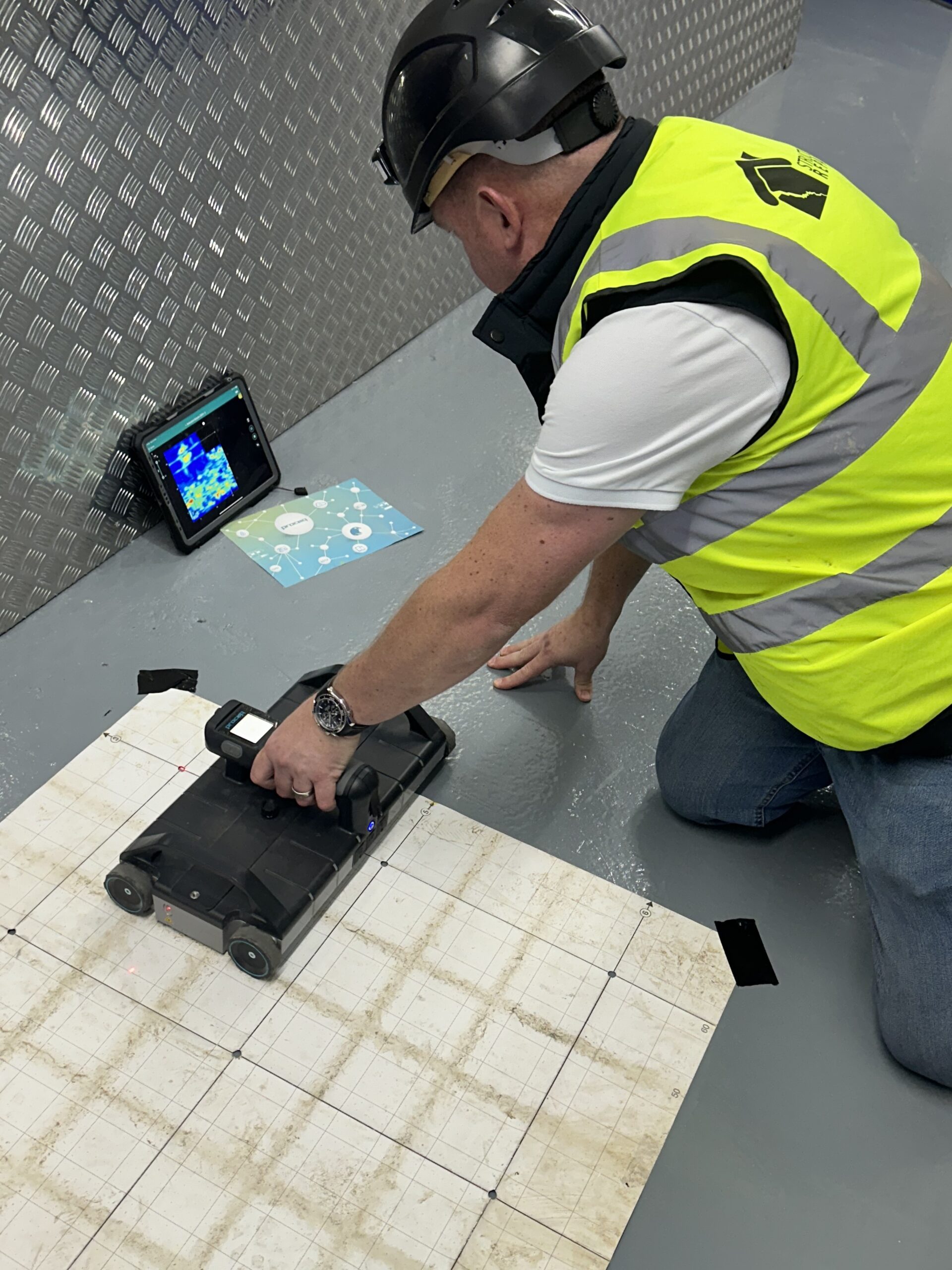In-Depth Insights into Concrete Scanning Procedures
In-Depth Insights into Concrete Scanning Procedures
Blog Article
Elevate Your Building Process With the Strategic Insights of Concrete Scanning for Enhanced Performance
One such technology that has actually reinvented the building sector is concrete scanning. By harnessing the strategic understandings provided by concrete scanning, construction professionals can open a realm of boosted productivity and streamlined processes.

Benefits of Concrete Scanning
Enhancing job effectiveness and security, concrete scanning provides a non-destructive method for finding surprise objects within concrete structures. By using innovations such as ground-penetrating radar (GPR) and concrete x-ray imaging, building and construction groups can precisely locate rebar, post-tension cables, electric channels, and other obstructions prior to boring, cutting, or coring into concrete.
The advantages of concrete scanning are countless. Construction websites can be intricate environments, and understanding what exists under the surface can stop crashes and injuries.
Additionally, concrete scanning advertises overall job efficiency by preventing and enhancing operations rework. By determining possible problems early on, teams can adjust their strategies proactively, saving time and resources in the future. Fundamentally, the adoption of concrete scanning innovations is a critical financial investment that pays dividends in terms of safety and security, cost-effectiveness, and productivity.
Innovation Combination for Performance
Concrete scanning's capacity to enhance operations and boost task performance can be more optimized through tactical combination of sophisticated modern technologies. By incorporating Building Details Modeling (BIM) software program into concrete scanning procedures, construction groups can attain a higher level of accuracy and control. BIM permits the production of 3D designs that offer comprehensive insights right into the task, allowing better decision-making and minimizing the possibility of errors. In addition, the integration of Enhanced Reality (AR) technology with concrete scanning can boost on-site visualization, permitting task supervisors and workers to overlay electronic info onto the physical environment in actual time. This can assist in a lot more exact positioning of aspects and enhance communication among group participants. The use of drones for airborne surveys in conjunction with concrete scanning can speed up information collection and analysis, making it possible for quicker decision-making and development tracking. Generally, the strategic combination of these technologies can dramatically increase performance and productivity in building and construction projects.
Avoiding Costly Mistakes
How can thorough attention to information throughout concrete scanning processes help building groups in preventing expensive mistakes? By utilizing innovative scanning technologies such as Ground Passing Through Radar (GPR) and electromagnetic induction, building groups can precisely detect rebar, energies, gaps, and other blockages within concrete frameworks. In addition, concrete scanning helps in making sure architectural integrity by determining weaknesses or flaws in the concrete very early on, allowing for prompt repair work and adjustments.
Enhancing Task Administration
Careful index interest to information during concrete scanning refines not only aids in preventing expensive errors but additionally lays a strong foundation for effective project management in construction ventures. By incorporating concrete scanning technology into job administration methods, building and construction groups can simplify workflows, improve interaction, and make certain that projects remain on track.
Concrete scanning supplies valuable understandings into the structural integrity of existing aspects, allowing job managers to make informed decisions pertaining to layout adjustments or building and construction series. This proactive method reduces the danger of unexpected delays or remodel, inevitably saving time and sources. Furthermore, the information obtained from concrete scanning can be incorporated right into Building Information Modeling (BIM) systems, making it possible for real-time partnership and sychronisation among numerous stakeholders.
In addition, concrete scanning aids job managers recognize possible threats or barriers prior to they intensify right into bigger problems, promoting a much safer workplace for all involved. With enhanced exposure and accuracy supplied by concrete scanning innovation, project supervisors can effectively intend, keep an eye on, and execute building and construction projects with higher efficiency and self-confidence.
Optimizing Performance
To improve performance in building and construction tasks, executing efficient strategies and making use of advanced innovations is crucial. Making best use of productivity entails improving procedures, maximizing resource allotment, and decreasing downtime. One essential facet of optimizing productivity is with the adoption of concrete scanning innovation. By utilizing ground-penetrating radar (GPR) and other scanning approaches, construction groups can accurately situate rebar, conduits, and other subsurface aspects, minimizing the danger of pricey errors and delays throughout excavation and exploration.
Additionally, accepting Structure Information Modeling (BIM) software application can considerably improve performance by developing detailed 3D versions that boost task visualization and control amongst various professions. BIM permits far better clash discovery, enabling problems to be recognized and fixed prior to construction even begins, conserving time and sources in the try here lengthy run.
Applying a lean construction method, which focuses on getting rid of waste and enhancing performance throughout all project stages, is another effective technique for making the most of efficiency. By promoting cooperation, communication, and continual renovation, building groups can work a lot more cohesively towards achieving task goals in a structured and efficient way.
Conclusion
To conclude, the critical application of concrete scanning in the building process supplies many advantages, including enhanced efficiency, expense financial savings, improved job management, and enhanced productivity. By incorporating this modern technology, construction groups can prevent expensive errors, enhance their procedures, and maximize their overall project output. Concrete scanning is a beneficial device that can elevate the building and construction procedure and result in more lucrative and effective outcomes.

Report this page